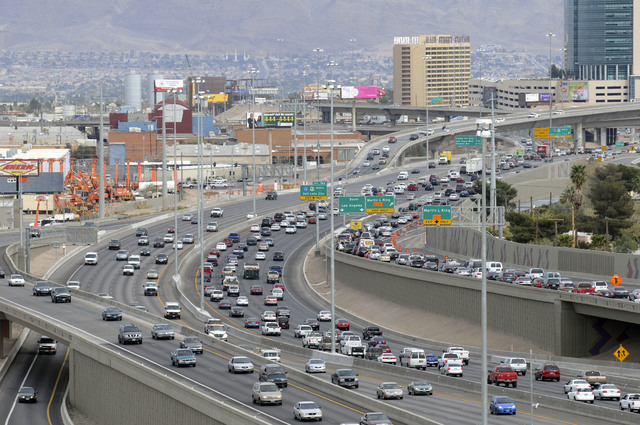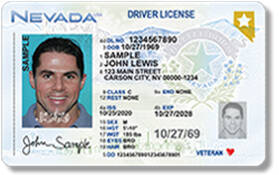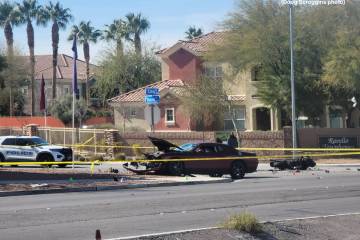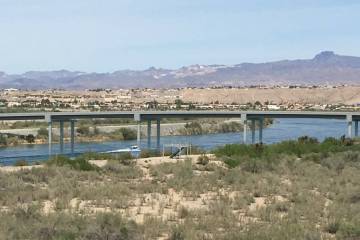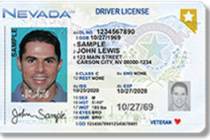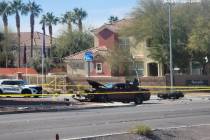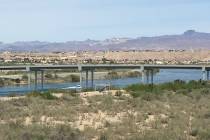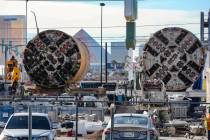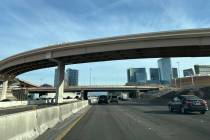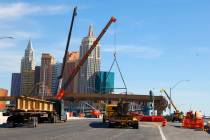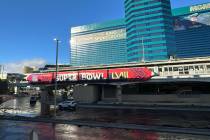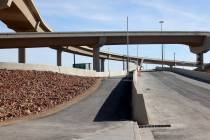Asphalt or concrete: road paving choices colored by money
The holidays are here, and with them come predictable traditions.
Christmas trees go up. Cookies are eaten. Pants are purchased one size bigger to accommodate those cookies.
A lot of stuff — not including road improvements — is pretty much put on pause.
With all the freeway construction unfolding amid the twinkle of holiday lights and the talk of even more to come, reader Trevor wanted to know something about repaving.
“When do they decide to use asphalt instead of cement?”
Interesting question, since we do in fact see two different kinds of pavement— that lighter grey kind and the very dark smooth stuff.
Transportation Department spokesman Damon Hodge said the choice is usually based on cost, and that colors are indicative of ingredients — a reddish road means volcanic rock is mixed in, and a bluish or white-tinted road means granite is mixed in.
Concrete, made of cement, water and gravel, has a longer lifespan than asphalt does. However, cement comes with a big price tag so contractors often steer toward asphalt. It’s cheaper in the short-term, although the lifespan of a well-used asphalt road may only be eight years or so, Hodge said.
So if you choose concrete, you’re looking at higher cost, but greater durability. Major roads like freeways or interstates often are paved with it.
So there we have it. Money doesn’t grow on trees, and Las Vegas Valley roads aren’t always concrete.
Something that makes money, on the other hand, is traffic citations. Susannah is a conscientious driver and wrote in looking to make herself more aware after recently receiving a hefty traffic ticket.
“After reading in a previous column of the fine for merging too soon into the right line I’m curious to know if there are standard rates for other violations. I’m sure knowing the rates for other infractions will remind us all of how important it is to drive safely.”
They just might, Susannah! And you can find them all right here: lasvegasnevada.gov/Pay/ViolationLookup.htm. Some of those fines are steep enough to take your breath away — like the nearly $700 for driving a motorcycle without a motorcycle license.
Larry Hadfield with the Metropolitan Police Department said that from Dec. 1 to Dec. 16, officers with the traffic bureau gave out 5,074 traffic citations.
And that’s just one department in one law enforcement agency in the valley. Sounds like we could all use the wake-up call Susannah had, me included.
And now finally, if we could get a drum roll, please ... we have a new addition to this column that will run twice a month: the Warrior’s Road Reminders.
These will be rules, laws and regulations that the Nevada Highway Patrol thinks drivers should pay special attention to.
We’re kicking off this week with a law explained by Nevada Highway Patrol trooper Loy Hixson, who was a traffic officer from 1995 until 2011 when he became an information officer. You might recognize his name — he’s a helpful guy with a wealth of information who’s often quoted in the Review-Journal.
This week, the traffic law Hixson wants to highlight concerns U-turns.
The number of illegal U-turns seen around the valley, especially near school zones, worries Hixson.
“Drivers also tend to be in such a hurry that making an illegal U-turn and risking the safety of the kids outweighs the time (of) driving an extra block where is it safer and legal.”
If pulled over, Hixson said the average cost of a U-turn ticket, taking into account all of the valley’s law enforcement entities, is about $190. If you’re in a school zone, double it.
The law, NRS 484B.403, isn’t hard to understand once it’s explained in an easy way, which Hixson was eager to do. Basically:
■ A U-turn cannot be made at an intersection displaying a sign that prohibits it.
■ A U-turn cannot be made on a steep hill where visibility is bad and the vehicle cannot be seen by other drivers approaching within 500 feet from either direction.
■ A left turn does not have to be available for you to make a U-turn. If you need to flip a U-turn and there isn’t a left turn-in, as long as the lanes of oncoming traffic are clear, it’s still legal to make the turn. It just has to be safe.
There we have it. Illegal U-turns are dangerous and can easily be avoided.
Now go. You’ve finished reading the column, so hit the road and get your last-minute Christmas shopping done!
If you have a question, tip or tirade, send an email to roadwarrior@reviewjournal.com. Include your phone number.



